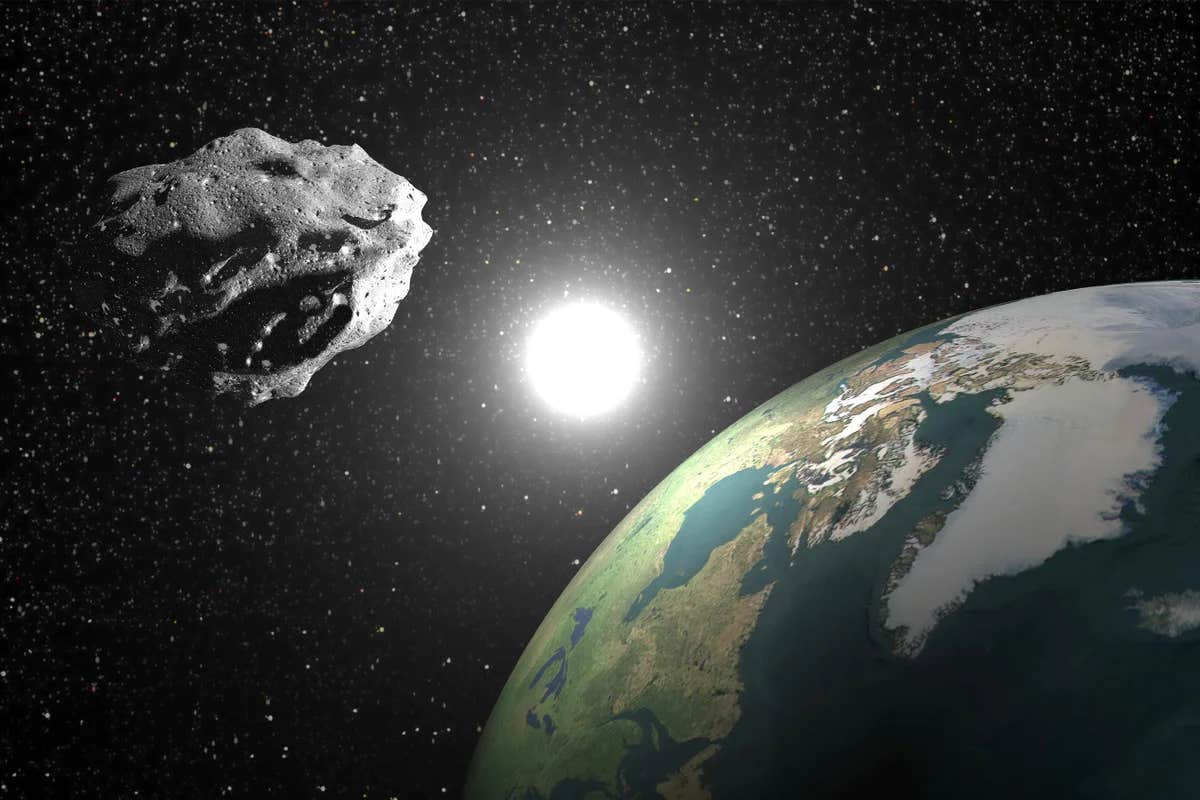Earth has 7 strange quasi-moons, minimoons, and two ghost moons
These quasi- and minimoons present enticing opportunities for future space missions and provide insight into our planet’s immediate cosmic neighborhood

While none of these bodies rival Earth’s true natural satellite, the Moon, in size or influence, they hold significant scientific value. (CREDIT: Elena Elenaphotos21/Alamy Stock Photo)
Earth is surrounded by a fascinating array of celestial companions: seven quasi-moons, an indeterminate number of minimoons, and potentially two elusive ghost moons. While none of these bodies rival Earth's true natural satellite, the Moon, in size or influence, they hold significant scientific value. These quasi- and minimoons present enticing opportunities for future space missions and provide insight into our planet's immediate cosmic neighborhood, as well as the types of asteroids that could pose a threat to Earth.
Quasi-Moons: Asteroids in Disguise
Quasi-moons earn their name because, from our perspective on Earth, they seem to behave like moons. However, a broader view reveals they are not moons at all but asteroids. This phenomenon is a kind of gravitational illusion. Although these asteroids appear to orbit Earth, they actually orbit the Sun, sharing a similar path to our planet.
These quasi-moons are slightly influenced by Earth's gravity, creating an effect where they sometimes drift ahead of Earth or lag behind as they orbit the Sun. This creates the illusion that they are orbiting Earth, a situation known as quasi-satellite motion. This is one of several ways celestial bodies can share an orbit with Earth. Another example is the "trojan" orbit, where an object loops around a point consistently ahead of or behind Earth. There's also the "horseshoe" orbit, where an object alternates between leading and trailing Earth without staying as close as a quasi-moon does.
All known quasi-moons are temporary. Over hundreds or thousands of years, they transition to other types of orbits, like trojan or horseshoe orbits. Conversely, some asteroids currently in these other orbits may eventually become quasi-moons.
Quasi-moons are not unique to Earth. Other planets, moons, and even asteroids can have quasi-moons. For example, Venus, Jupiter, Saturn, Neptune, Pluto, and the asteroid Ceres each host at least one known quasi-moon. The first discovered quasi-moon, Zoozve, orbits Venus. It was given its unique name due to a historical misreading of its original identifier, 2002 VE68.
Minimoons: Earth's Brief Visitors
Minimoons differ from quasi-moons in that they genuinely orbit Earth, but only for a short time.
Typically lasting less than a year, these objects are small and hard to detect. Only four have been discovered so far, and none remain in orbit. Some suspected minimoons have turned out to be space debris, such as the Gaia spacecraft or rocket stages from the Chang’e 2 and Lunar Prospector missions.
Ghost Moons: Myth or Reality?
Ghost moons, if they exist, are clouds of dust that share Earth's orbit, staying ahead or behind as we travel around the Sun. Known as "Kordylewski clouds," these potential ghost moons were first reported in the 1960s and tentatively confirmed in 2018.
However, there is no consensus on their existence, and they may appear and disappear based on the influence of the Sun and other planets.
Collision Risks
Initially, scientists thought certain quasi-moons posed a significant impact risk to Earth. Thankfully, this is no longer the case. Current quasi-moons, ranging from 10 to 300 meters (30 to 1,000 feet) in size, could cause regional damage if they were to collide with Earth. However, no known quasi-moon is on a collision course with Earth in the foreseeable future. Their orbits are well enough understood that any potential impact would be predicted well in advance.
Minimoons, on the other hand, do occasionally hit Earth. About 1% of all minimoons eventually enter our atmosphere, but most are small and burn up before reaching the surface. The likelihood of a dangerously large minimoon, about 1 kilometer (0.6 miles) in diameter, striking Earth is extremely low, estimated to occur once every billion years.
Quasi-moons and minimoons offer valuable insights into our cosmic neighborhood. These bodies may originate from the main asteroid belt, impacts on the Moon, or the breakup of larger objects with similar orbits. Studying them can help scientists understand the nature of asteroids and assess the potential threats they pose to Earth.
Quasi-moons, due to their proximity and size, are ideal targets for exploration and study. They are easier to visit and potentially redirect compared to other asteroids. For instance, China’s Tianwen-2 mission, scheduled for launch in 2025, aims to visit the quasi-moon 469219 Kamoʻoalewa. The mission will collect samples and analyze the asteroid's surface. In the future, quasi-moons orbiting other worlds could serve as platforms for scientific observation, providing a unique vantage point for studying the bodies they orbit.
Earth's quasi-moons, minimoons, and potential ghost moons, while not as prominent as our Moon, are crucial for scientific exploration and understanding our place in the cosmos. Their study not only enriches our knowledge of celestial mechanics but also enhances our ability to predict and mitigate potential asteroid impacts.
Note: Materials provided above by the The Brighter Side of News. Content may be edited for style and length.
Like these kind of feel good stories? Get the Brighter Side of News' newsletter.
Joseph Shavit
Head Science News Writer | Communicating Innovation & Discovery
Based in Los Angeles, Joseph Shavit is an accomplished science journalist, head science news writer and co-founder at The Brighter Side of News, where he translates cutting-edge discoveries into compelling stories for a broad audience. With a strong background spanning science, business, product management, media leadership, and entrepreneurship, Joseph brings a unique perspective to science communication. His expertise allows him to uncover the intersection of technological advancements and market potential, shedding light on how groundbreaking research evolves into transformative products and industries.



